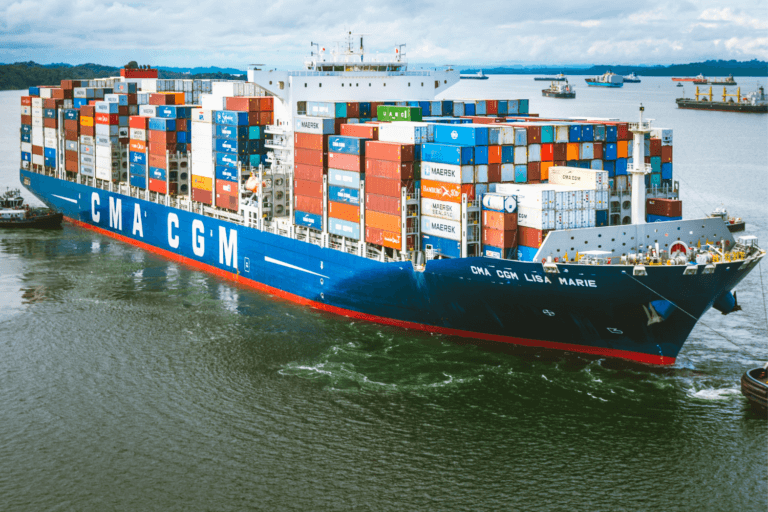Handling, storing and transporting this type of material carries a high risk of serious and even fatal accidents. This requires companies to implement modern and efficient prevention protocols that respect current legislation and ensure both the commitment and constant training of the personnel in charge of these tasks.
All industrial and productive activity is permanently exposed to risks that can cause very negative effects on workers and facilities.
These risks are exponentially higher in those activities where dangerous substances are handled. Either because they are manufactured or distributed in detail (as liquefied gas and gasoline); or because they are used as tools and raw materials for other processes (such as explosives, corrosive chemicals, and solvents, among other examples).
This condition requires that all workers in contact with this type of elements have strict training to handle and store them correctly.
This is the only way to prevent the various accidents and occupational diseases that are generated by the mishandling of dangerous substances. Emergencies that, in the most serious cases, cause death and destruction of entire ecosystems.
What are dangerous substances?
The United Nations defines hazardous substances as any element or chemical compound that can put the health and safety of people, the environment and the environment at risk.
The UN also defines nine classes of hazardous substances based on the physical and chemical characteristics of each element, as well as the risk they represent.
The laws of each country reproduce this classification. In the case of Chile, the use of dangerous substances is regulated by the NCh 382/2004 standard, which establishes the different symbols to classify its nine.
In parallel, Supreme Decree No. 43 of the Ministry of Health establishes the safety requirements that companies must meet to safely store and handle this type of substance.
What are the different types of hazardous substances?
The different types of hazardous substances are classified according to the following definitions:
1. Explosives
They are those substances that release gas and heat. They can be activated by the effect of heat, shock or contamination, which leads to mechanical or thermal risks. This implies danger of massive explosions, projection of materials and/or fires.
2. Gas
They are those chemical substances that can be compressed or liquefied, through pressure, extreme cold or dissolution (among other techniques). They are divided into flammable, non-flammable and poisonous. This condition implies risk of burns, explosions, freezing and poisoning.
3. Flammable and Combustible Liquids
They are those materials that can generate fires when they are close to a heat source (for example, ethyl alcohol and toluene). Substances modified to generate heat or power (such as diesel oil, gasoline, and kerosene) are also included. They can create a risk of fire, burns and explosions.
4. Flammable solids
They are solid non-explosive substances, but capable of causing fire through friction or heat. Included in this category are solids that burn easily and are difficult to extinguish (such as coal, pellets, and cellulose); and also, spontaneous combustion materials (such as pyrophosphoric).
5. Organic oxides and peroxides
They are substances that produce oxygen, which stimulates the combustion of nearby organic and inorganic materials. Some examples are ammonium nitrate, calcium hypochlorite, and peroxide bleach, among others.
6. Poisonous and irritating substances
They are the ones that can cause serious damage to all forms of life, including people, animals and plants. They can be absorbed through the skin, by direct ingestion or inhalation. They can also be poisonous, flammable and corrosive (such as anilines, arsenic compounds and carbon tetrachloride, among others).
7. Radioactive materials
They are substances that emit different types of particles called alpha, beta and gamma. They can cause burns in exposed living organisms, as well as genetic mutations, organic alterations, and environmental contamination (such as cobalt, uranium, and plutonium).
8. Corrosive materials
They are the substances that, when coming into contact with the skin, cause various damages such as burns and tissue destruction. They also corrode or weaken steel and aluminum structures, and their vapors can be poisonous and irritating (for example, hydrochloric acid, nitric acid, caustic soda, and sulfuric acid).
9. Regulated Materials
They are compounds obtained from the use or mixture of other types of substances. These include anesthetics, quicklime, naphthalene, magnetized materials, and household cleaning items, among others.
The law establishes that these nine types of dangerous substances must be visually identified in accordance with a universal signage that combines colors, symbols and numbers. This allows a quick identification of its characteristics and a better classification of its danger.
How to avoid accidents when handling dangerous substances?
The various types of risks and dangers associated with the use of dangerous substances imply an enormous challenge, both in terms of logistics, prevention and education.
In concrete terms, the responsibility to avoid accidents when handling dangerous substances requires companies to work on the basis of three basic principles:
- Respect current regulations.
- Design and apply an efficient Occupational Health and Safety strategy, specifically oriented towards the use, storage and transport of hazardous substances.
- Ensure that workers know and respect the security protocols defined by each company, in accordance with current legislation.
Since most accidents with dangerous substances are caused by human negligence, it is important to follow some specific advice that will help us to better protect the health and physical integrity of workers.
As explained by occupational safety experts, some of these basic recommendations are the following:
- Before starting work, we must plan in detail the steps to follow and ensure that all the security protocols provided by the company are followed (according to current regulations).
- Review in advance the safety data sheet where the behavior of the dangerous substance is specified, according to its specific characteristics (some even react in contact with air).
- Do not carry out any type of work or activity with dangerous substances, if you do not have training or authorization to do so.
- Pay attention to all posted warning signs, such as “dangerous substance” (both in the company and in transport vehicles).
- Check that access to the area where work with dangerous substances is controlled and protected by specially trained surveillance personnel.
- Report any symptoms or discomfort eventually caused by the handling of dangerous substances. This will make it possible to control possible leaks or spills and protect the rest of the workers.
How is a hazardous substance management protocol implemented?
Each employer is responsible for informing and training workers who handle these types of substances. In addition, they must ensure compliance with security protocols, supervising and managing each of the steps provided in them.
The protocols must incorporate safety specifications for both workers and facilities. This includes specific provisions for taking inventories and disposing of expired substances.
Some of the main guidelines that should include a safety protocol for the handling of hazardous substances are the following:
A. Instructions for workers
All those who work with hazardous substances must use specific barrier elements and Personal Protection (PPE). In addition, the manufacturer of the hazardous substances must provide the company with a Hazardous Materials Safety Sheet (MSDS).
Employees must have permanent access to this MSDS and must also know the relevant emergency and/or evacuation plans. This includes first aid management, initial actions during chemical fires and direct contact with emergency institutions.
Likewise, at the end of the day, all workers who handle dangerous substances must wash up neatly.
B. Conditions of the facilities
There must be a record where the entry and storage of hazardous substances is recorded, in addition to the distribution of the respective MSDS.
Storage areas for hazardous substances must be constantly monitored by specialized technical teams. These areas can only be used for this purpose, and must be correctly marked and delimited, in order to avoid carelessness in the rest of the staff.
All dangerous substances must be stored according to their respective technical requirements and compatibility with the environment.
It is important to constantly check the condition of containers and shelves, as well as the floors of the storage area and of the vehicles used to transport hazardous substances.
In areas where dangerous substances are manufactured or stored, we should install a risk rating diagram. This information must detail, on a scale from 0 to 4, all possible dangers to human health, as well as the risks of flammability and reactivity.
C. Stock Indications:
The register of dangerous substances must be updated periodically (hopefully every month) and indicate the following:
- Commercial and chemical name of the dangerous substance.
- Logo and identification number of the United Nations.
- Exact quantity stored.
- Evidence of the expiration dates of each product.
D. Indications on the disposal of dangerous substances:
Hazardous substances that have passed their expiration date, or those that are not properly labeled must be classified as “obsolete waste.”
Similarly, we must thoroughly review the conditions and packaging of any substance that has been stored for 5 years or more. After this inspection, we will determine if it is feasible to keep them in storage, or if they need to be discarded.
It is also important to consider that any protocol for the safe handling of hazardous substances must include the following processes in writing:
- Chemical Emergency Plan
- Regulations for the Management of Dangerous Substances.
- Harmless Waste Management Plan.
- Hazardous Waste Management Plan.
- Procedure for Control of Spills of Chemical Substances.
The contribution of technology for the safe handling of hazardous substances
Storing, handling and transporting hazardous substances is an extremely complex and dangerous task. Not only because of its high level of risk, but also because of the large number of variables that must be constantly collected, classified, and analyzed.
This difficulty requires implementing care and prevention strategies based on state-of-the-art technological tools.
Only in this way we can prevent errors caused by carelessness and human negligence. Errors that, in addition, can have serious consequences for workers and companies.
At DataScope we understand that technology helps you create safer workspaces. For this reason, we offer you advanced tools and apps that will help you optimize the handling, storage and transport of hazardous substances.
For example, you can create personalized digital checklists that are displayed directly on your staff’s mobile devices and are adapted to the risk characteristics of each specific substance.
This will give you real and automated control of storage, which will translate into more security for your staff and your company’s facilities.






